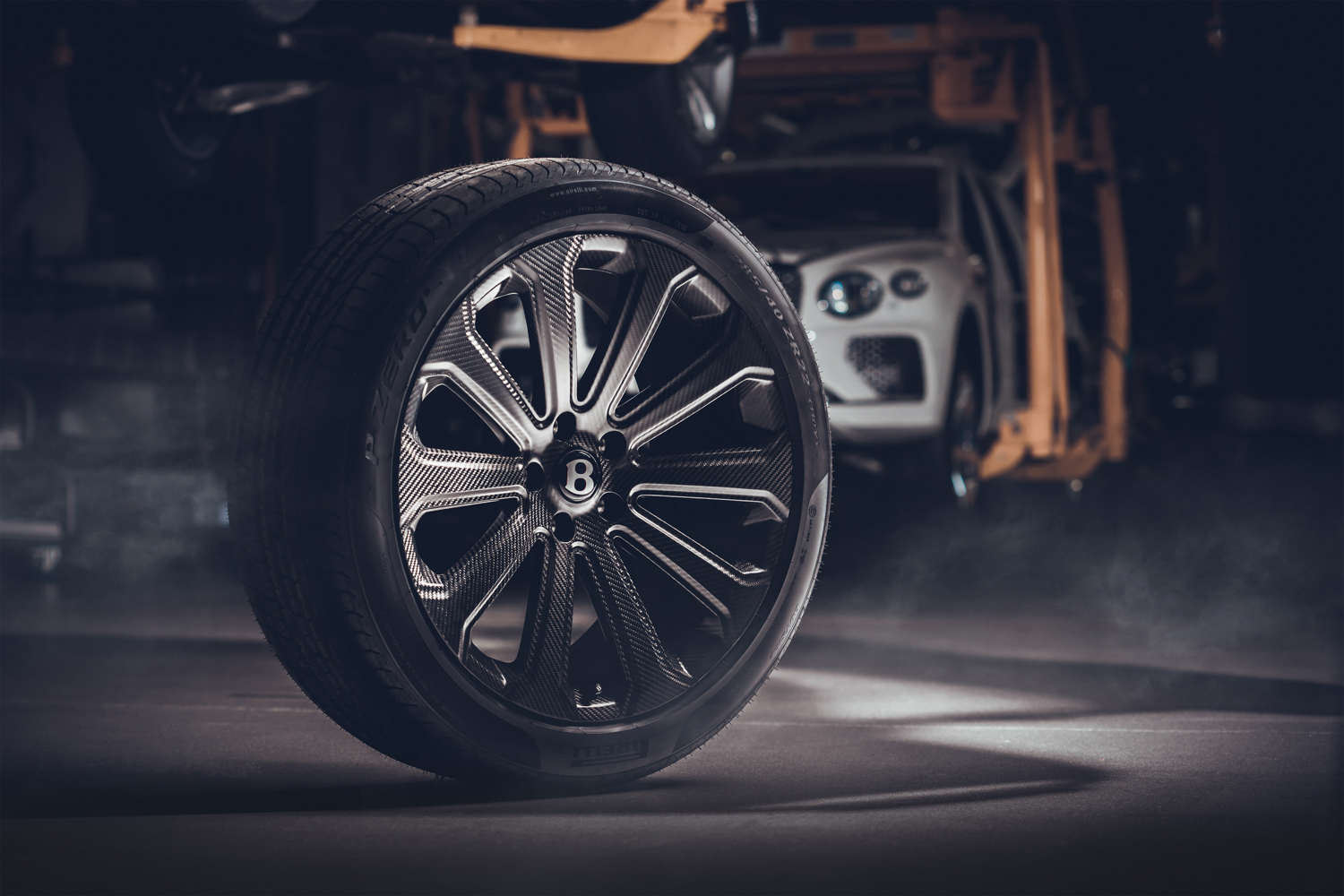I think we can all agree that the Bentley Bentayga, which weighs a portly 2.4 tonnes at the kerb, is a car in serious need of a Weight Watchers' course. Well, good news - it's getting just that, potentially shedding as much as 24kg (every little helps, etc) thanks to some new wheels.
Is carbon the right material for a wheel?
No, this isn't a downgrade to smaller, simpler steel wheels. In fact, it's the exact, total opposite of that. This is the Bentayga's new optional 22-inch wheel, designed by Mulliner - Bentley's in-house hand-made and bespoke options division. And it's made of carbon fibre.
That's important because while carbon is great for making things lighter, it's not necessarily the best material for a wheel. That's because carbon tends to be strong in one specific direction, and a wheel needs to the strong all the way around.
Evil Germanic destruction tests
So, Bentley and Mulliner went to work with carbon fibre experts Bucci Composites and designed this - the largest carbon wheel on the market. And it's safe, too. Bentley and Bucci have put the wheel through the exhaustive German TÜV (Technischer Überwachungsverei - Technical Inspection Association) tests, and it's one of the first carbon wheels to pass all of the TÜV's tests with flying colours.
Those tests include biaxial stress testing, radial and lateral impact testing for simulating potholes and cobblestones, tyre overpressure, and excessive torque tests exceeding the permitted limits. The impact test is one of the TÜV's nastiest, and can actually cause a normal alloy wheel to shatter, with explosive tyre deflation the result. The Bentley-Mulliner-Bucci wheel instead allows a slow deflation in this violent test, which means the Bentayga can be controlled and brought to a safe stop. That's because the weave pulls apart leaving openings to allow gradual air loss rather than instant deflation like an aluminium rim. The new wheels have also been put through their paces at the famed Nurburgring Nordschleife race track.
Better steering, braking, and tyre wear
How has Bentley made such an impressive wheel? By using a high-pressure RTM (Resin Transfer Moulding) process, where carbon weave segments are then stacked, heated and draped into a mould to create three-dimensional preforms. Then resin and hardener are injected, and the whole thing is baked in a high-pressure autoclave before machining and polishing to finish. Bentley reckons that the 6kg-per-wheel weight saving compared to an alloy equivalent makes for sharper steering and handling, improved braking response, and reduced tyre wear - because the stiffer carbon rim does not suffer from the same amount of bending, it allows for greater tyre stability and a more consistent contact patch thanks to a larger tyre support surface.






